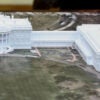The latest campaign of the U.S. government focuses on what to do in case of a nuclear attack. The only problem is that, like many government programs, it does not offer much useful advice. According to government officials, the best thing one can do is stay put and find shelter. Sounds like the old “duck and cover” from the Cold War, doesn’t it?
Finding shelter (e.g., in a car, basement, or hole in the ground) might spare an individual some effects from intense nuclear radiation, light, and pressure waves that are created by a precipitous rise in temperature in the blast zone, provided you have a good basement. However, this shelter will do scarce little to mitigate the massive fires that occur after a nuclear explosion.
A high-altitude electromagnetic pulse (EMP) attack would have an even more devastating impact. According to national security experts James Carafano and Richard Weitz, “A nuclear device detonated high in the atmosphere above the American mainland can easily disable the country’s electrical grid.” It is important to note that an EMP is produced during any nuclear weapons detonation.
Actually, the best defense against a nuclear detonation is to prevent its occurrence in the first place by building up robust missile defense capabilities. Currently, the United States does not have missile defenses that would protect it against a “scud in a bucket” scenario—a short-range missile with a nuclear warhead launched from an air or ship platform toward the U.S. coastland and detonated at a high altitude. On top of this, the Obama Administration has cut the size of missile defenses for protection of the U.S. homeland by 44 percent. Despite these shortsighted cuts, the United States has the capability to defend its homeland, institutions, and people if it decides to pursue a more robust missile defense capability.
The United States should pursue a robust ballistic missile defense capability, especially in light of the threats from rogue states that are vigorously pursuing ballistic missile and nuclear weapon capability. Unfortunately, the Senate is now considering New START, a strategic nuclear arms reductions treaty with the Russian Federation that would limit U.S. missile defense capabilities.
This happens amidst the Obama Administration’s pressure on the Senate to pass the treaty in the “lame duck” session of Congress, which does not offer the necessary time for the Senate to adequately evaluate the treaty, especially newly seated Senators who need time to become educated on the content of the treaty. This treaty will be implemented on their watch over the next 10 years.
Within the first five of those years, Iran or North Korea could have capability to deliver a nuclear-armed intercontinental ballistic missile to the continental United States—not to mention a capability to conduct an EMP attack on the U.S. The U.S. government’s campaign ad should have closed with the following admonition: Now is not the time to be limiting missile defenses in the face of this nuclear threat.
Co-authored by Michaela Bendikova.

































6 Replies to “Non-Advice from the Government in Case of a Nuclear Attack”